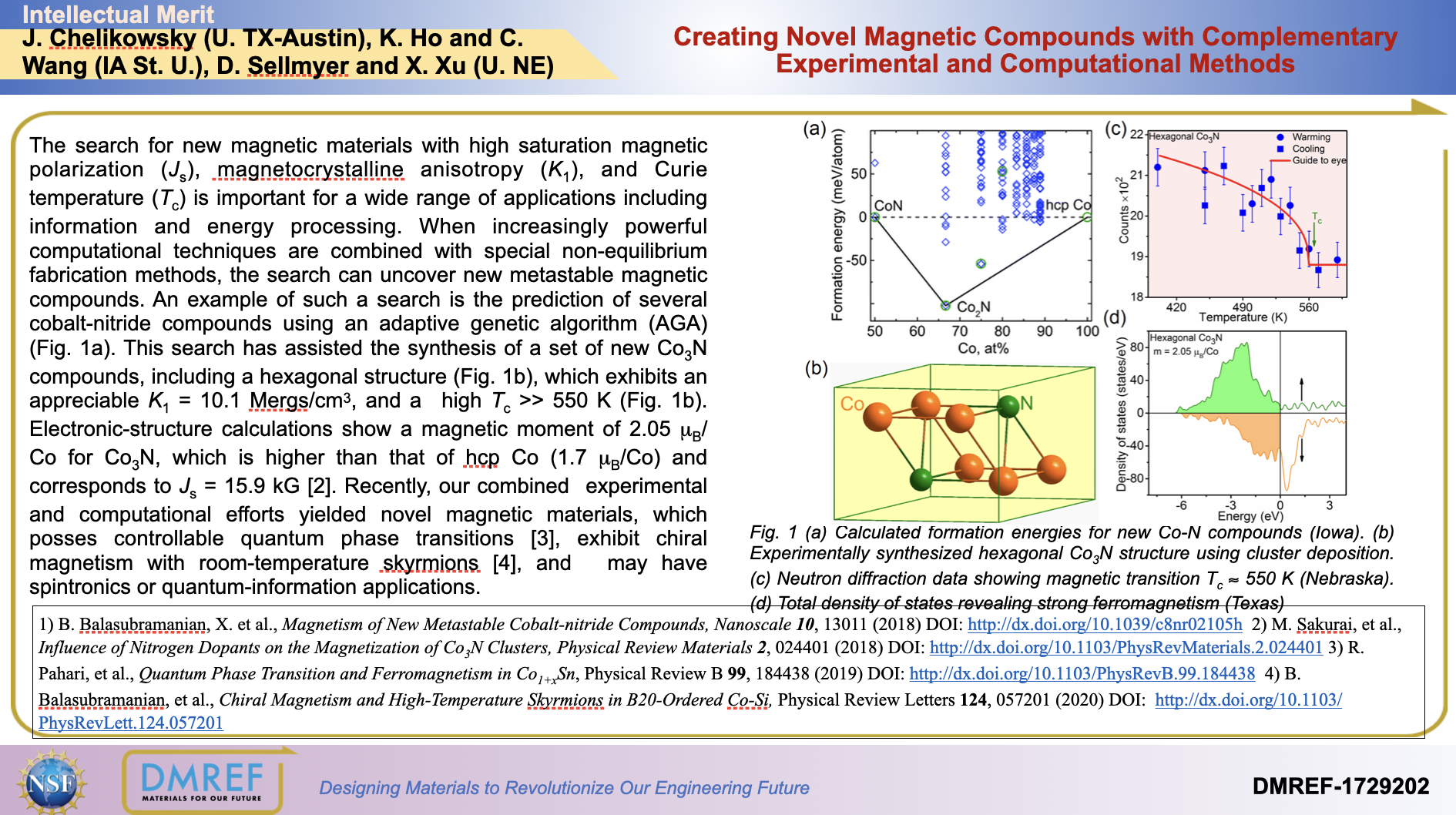Creating Novel Magnetic Compounds with Complementary Experimental and Computational Methods
invalid_date

The search for new magnetic materials with high saturation magnetic polarization (Js), magnetocrystalline anisotropy (K1), and Curie temperature (Tc) is important for a wide range of applications including information and energy processing. When increasingly powerful computational techniques are combined with special non-equilibrium fabrication methods, the search can uncover new metastable magnetic compounds. An example of such a search is the prediction of several cobalt-nitride compounds using an adaptive genetic algorithm (AGA) (Fig. 1a). This search has assisted the synthesis of a set of new Co3N compounds, including a hexagonal structure (Fig. 1b), which exhibits an appreciable K1 = 10.1 Mergs/cm3, and a high Tc >> 550 K (Fig. 1b). Electronic-structure calculations show a magnetic moment of 2.05 μB/Co for Co3N, which is higher than that of hcp Co (1.7 μB/Co) and corresponds to Js = 15.9 kG [2]. Recently, our combined experimental and computational efforts yielded novel magnetic materials, which posses controllable quantum phase transitions [3], exhibit chiral magnetism with room-temperature skyrmions [4], and may have spintronics or quantum-information applications.
